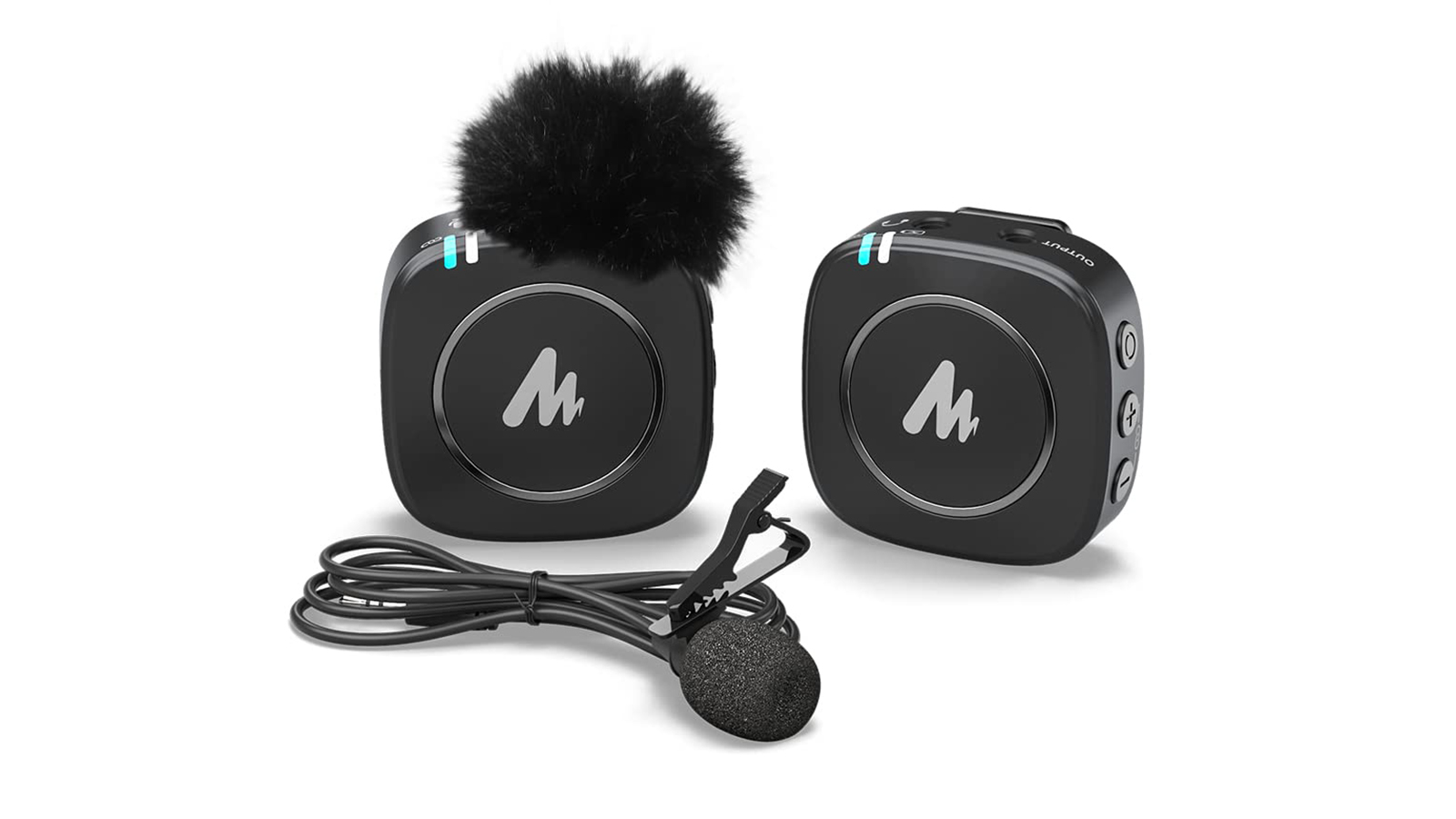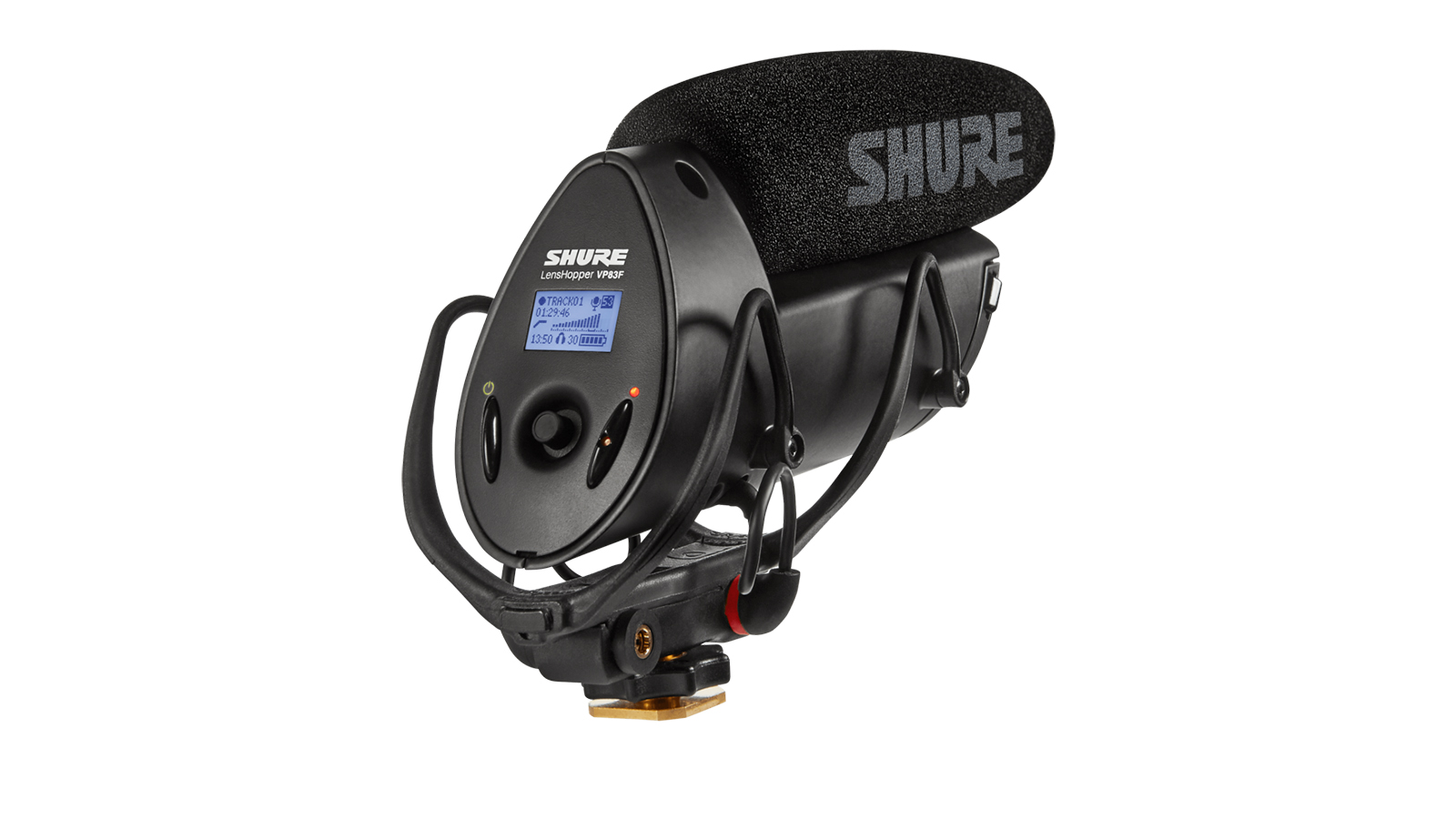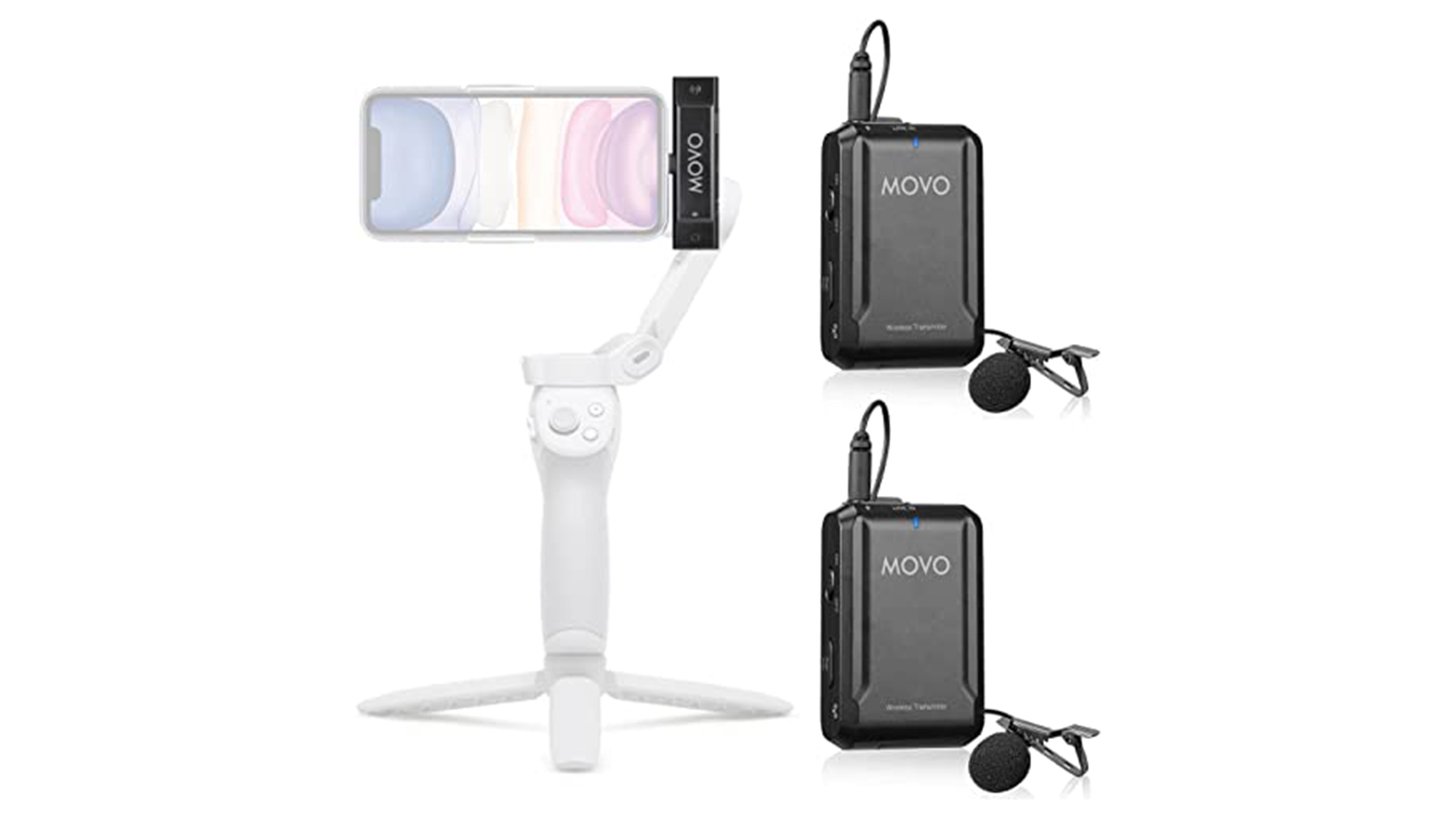Best camera microphones 2026: Shotgun and lavalier mics for content creators
Bypass your camera’s built-in mic with possibly the most important add-on to any video rig

With even the most basic of smartphones, anybody can become a video creator. However, what sets the great above the good is the understanding that amazing video footage is only half of the equation for making truly professional-grade content, whether you're vlogging, filming live music or anything else. High quality audio is vital in video content creation, and to capture the best possible sound you’ll need a dedicated camera microphone.
The best camera microphones often differ from the type you’d see set up in a studio, in that they are usually smaller and more discreet, and they offer certain functionality designed to enhance audio used for video production.
In this guide we will outline our pics for some of the best camera microphones available today, as well as describing some of the terminology and functionality you should be looking out for when deciding which one is right for you. Let’s get started.
Our top picks
For our money, we’d stick with a trusted brand and recommend the Rode VideoMic Go II as our overall best camera microphone, purely because it is both compact and lightweight, and delivers reliable results every time. The VideoMic Go II requires no power either, which makes it an ideal backup for other, potentially higher quality mics in your arsenal.
We were also impressed with the Joby Wavo PRO, as a more fully-featured option, with the noise reduction and safety track recording both particularly appealing. As a wireless option, we found the experience using the DJI Mic II set near-flawless in its execution, although tech of this calibre naturally comes with a premium price tag too.
Best overall

1. Rode VideoMic GO II
Our expert review:
Specifications
Reasons to buy
Reasons to avoid
Perhaps the most ubiquitous shotgun microphone, the Rode VideoMic GO, now in its second iteration, is extremely popular in the content creation world thanks to its lightweight, compact design. It’s extremely simple to use - simply connect the 3.5mm jack to your camera’s microphone input, or the USB output to your smartphone or tablet, and you’re ready to roll.
We particularly like the built-in Helix isolation shockmount, which Rode claims is near indestructible, as it does a superb job of negating any noise caused by camera movement, making it an ideal candidate for run-and-gun style shooting. For the price, it’s hard to beat as a main mic or a backup you keep in your bag for emergencies.
Best budget

2. Maono Wireless Lavalier
Our expert review:
Specifications
Reasons to buy
Reasons to avoid
Wireless lavalier systems are an increasingly popular way to add a degree of freedom to your recording. When you’re not bound by the length of the mic cable, you are free to roam safe in the knowledge your voice is being captured the way you want it to be.
The Maono wireless lavalier mic system is effectively a 2-in-1 proposition. You get two small black pucks - one of which connects to your camera, and one to the microphone you’ll be using. The pucks pair within a couple of seconds, and you’re free to go.
The transmitter puck has a built-in mic, which is ideal for omnidirectional recordings in a quiet area, or you can connect a separate 3.5mm microphone cable to use another mic. We found the system to be stable and reliable; its 20m range isn’t the highest, but as a way of liberating yourself from long trailing cables this is a great option.
Best for pros

3. Shure VP83F Lenshopper
Our expert review:
Specifications
Reasons to buy
Reasons to avoid
Professional videographers will likely require a camera microphone with some additional tools, especially if their livelihood depends on it. Seasoned video producers will all have horror stories of SD cards that failed to record, which makes the Shure VP83F such an interesting proposition.
Shure needs no introduction when it comes to microphones, so you can be certain the VP83F will deliver the goods on a sonic level too. Sure, it’s an expensive microphone, but for the money you’re getting a high-end recording experience, with the peace of mind provided by having the microphone recording the audio directly to card itself alongside sending it to the camera.
Best for interviews

4. Joby Wavo PRO
Our expert review:
Specifications
Reasons to buy
Reasons to avoid
Credit to Joby for looking at the humble shotgun microphone and looking at how it could introduce some innovation. For starters, the Wavo PRO features active noise reduction, whereby the mic ‘listens’ to the ambient noise and actively mitigates it, leaving you with clean, noise-free audio.
We like the ability to add a second mic via a 3.5mm jack input, and found the -10dB safety track option a godsend. Basically, by adding a safety track, you can record with confidence that even if your main recording is distorted, you’ve always got a ‘clean’ backup to bail you out.
It is a somewhat large device, compared to others on the list, but when you add together all the features and benefits, the Joby Wavo PRO is a highly attractive option for videographers of any genre.
Best for outdoors

5. DJI Mic II
Our expert review:
Specifications
Reasons to buy
Reasons to avoid
Arguably more famous for its drones, DJI has nonetheless built up a solid product range of videography tools and with the DJI Mic II it has applied some of its cool tech to help you get the best possible audio in your recordings. DJI Mic II is a wireless lavalier set, which comes in a handy case (similar to a set of Apple AirPods) which keep the transmitters and receiver topped up with charge - up to 18 hours in total, making it an ideal option for location shooting.
We liked the simple plug-and-play operation, while a stated possible range between transmitter and receiver standing around the 250 metre mark, you’ll run out of places to stand before you lose a connection here.
Fast connection, touchscreen control and multiple connection options for a variety of devices makes this a sleek, well thought out option for most content creators.
Best for smartphones

6. Movo Wireless Mini DUO
Our expert review:
Specifications
Reasons to buy
Reasons to avoid
As many videographers look to the device they carry everywhere - their smartphone - to produce content, it figures that mic brands would look to provide options to enhance the experience. There are Movo Wireless Mini DUO systems built specifically for iPhone and Android users, and comprises a receiver device which connects directly to your phone, and two transmitters which clip onto the subject being recorded.
It’s a smart, compact solution which we found to work perfectly. Connection between phone and mics is instantaneous, and while the audio quality won’t be up to the mark of some of the more expensive options in this list, for basic streaming and recording of vlogs it’s more than passable.
FAQs

What type of camera microphone are there?
There are a couple of different options in terms of microphone type:
‘Shotgun’ mics connect directly to the camera via a cable, and are usually affixed to the top of the camera via hotshoe. Often called ‘directional’ mics, they mitigate ambient noise, like wind or traffic, allowing the subject to be the sole focus of the recording. ‘Lavalier’, or ‘lapel mics’, are the smaller devices you often see attached to an interviewee’s clothing on TV. These are much more discreet and are pointed directly towards the speaker’s mouth to reduce the amount of ambient noise captured by the mic.
Dedicated camera microphones also offer more control over the audio recording than your camera’s internal microphone. While some higher-end cameras will give you rudimentary control over volume levels, a dedicated microphone will allow you to control volume, sensitivity (i.e. how much audio you want the mic to collect) and also direction. This last point is key. Imagine you’re recording outdoors, and there’s wind and other ambient noise to contend with. A directional mic, with a windshield, will allow you to focus the mic directly at the source you’re trying to capture - e.g. an interviewee - and be confident you’ll record just that sound with vastly reduced wind sound.
Likewise, an omni-directional camera mic captures sound from every angle making it the ideal choice for interview or discussion videos recorded in a quieter, self-contained space.
Many mics also give you control over things like frequency response or noise reduction, which allows you to cut out certain frequencies at source, reducing the amount of post-production you’ll need to do on a waveform. This could be low frequencies, like the rumble of traffic outside the building, or it could be high frequencies like that creaky door down the corridor.
What do I need to know about compatibility?
MusicRadar's got your back
It’s also important to match the right type of microphone with your camera. There are plenty of options for smartphone creators, although be mindful of the mic’s method of connectivity when you’re buying; some will connect over USB-C or Lightning, while others require a 3.5mm jack input which is becoming almost impossible to find on a smart device.
If you’re serious about taking your video and content creation to the next level, then a dedicated camera microphone should be considered a priority purchase. These often inexpensive (when compared to cameras, anyway) add-ons might seem like a luxury, but your videos will have a level of sheen and professional quality that you just can’t achieve using your camera’s built-in microphone.
How we choose camera microphones
Here at MusicRadar, we are experts in our field, with many years of playing, creating and product testing between us. We live and breathe everything music gear related, and we draw on this knowledge and experience of using products in live, recording and rehearsal scenarios when selecting the products for our guides.
When choosing what we believe to be the best camera microphones available right now, we combine our hands-on experience, user reviews and testimonies and engage in lengthy discussions with our editorial colleagues to reach a consensus about the top products in any given category.
First and foremost, we are musicians, and we want other players to find the right product for them. So we take into careful consideration everything from budget to feature set, ease of use and durability.
Find out more about how we make our recommendations and how we test each of the products in our buyer's guides.
Read more:
- Best microphones for iPhone and iPad: mics for mobile recording
- Best podcasting microphones: top picks for every budget and level
- Best cheap microphones: budget mics for the studio or stage
Want all the hottest music and gear news, reviews, deals, features and more, direct to your inbox? Sign up here.
Chris Corfield is a journalist with over 12 years of experience writing for some of the music world's biggest brands including Orange Amplification, MusicRadar, Guitar World, Total Guitar and Dawsons Music. Chris loves getting nerdy about everything from guitar and bass gear, to synths, microphones, DJ gear and music production hardware.
